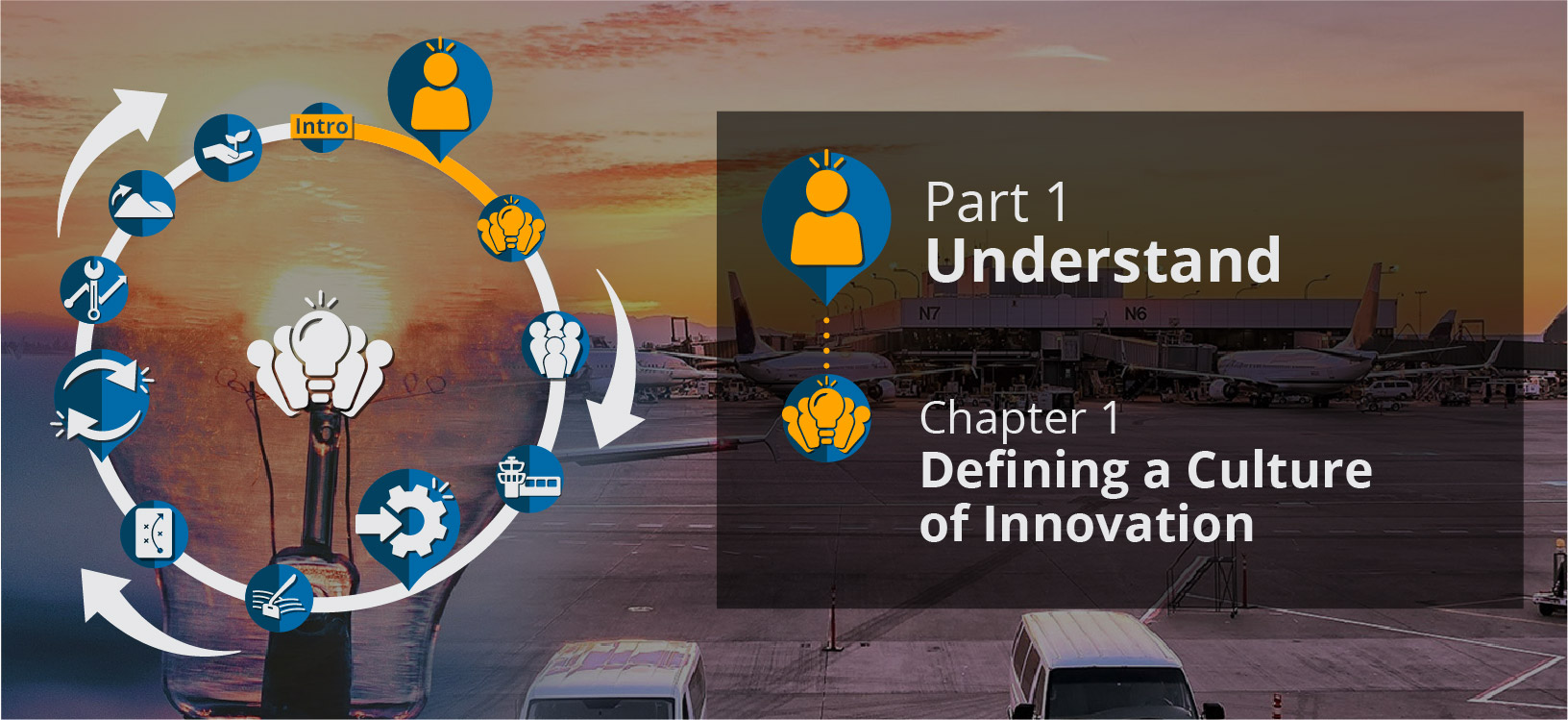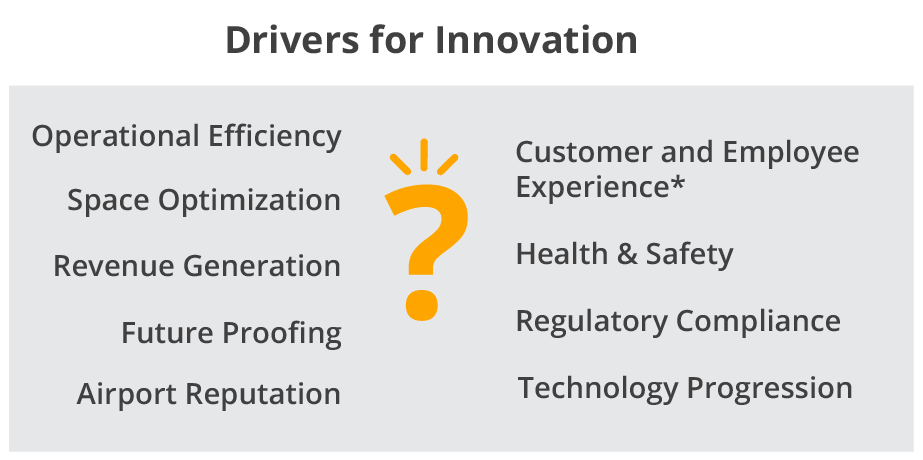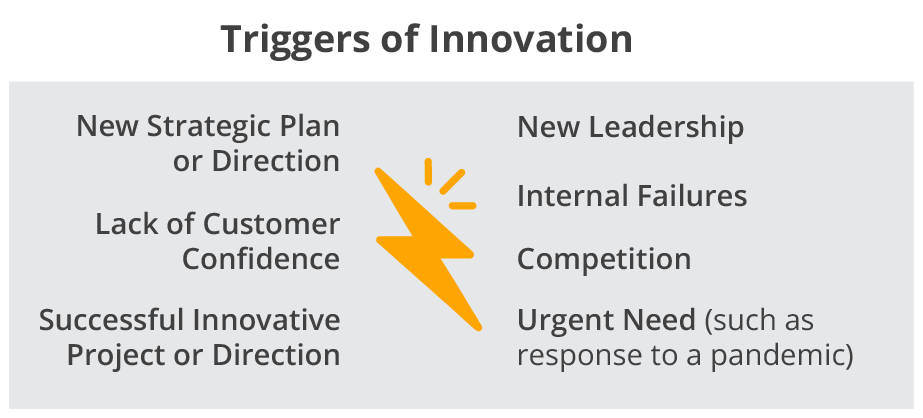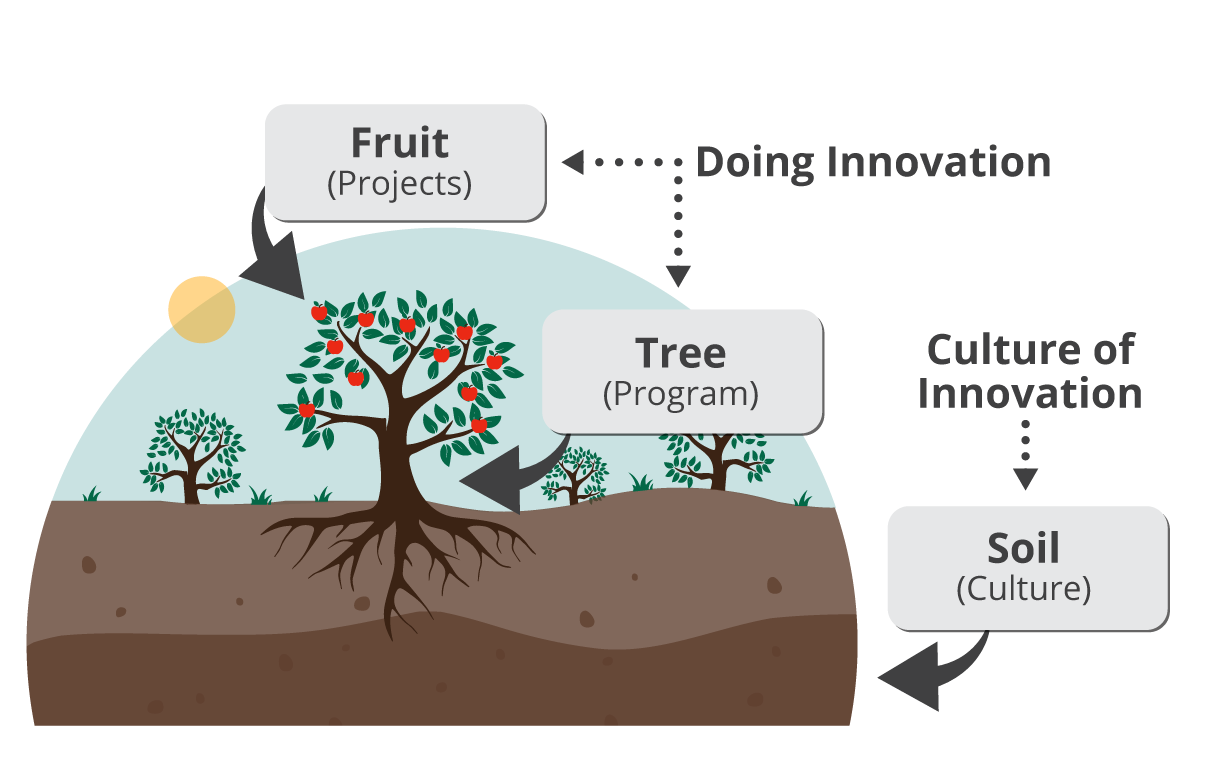
Chapter 1: Defining a Culture of Innovation
What is an Organization's Culture?
Organizational culture: According to Merriam-Webster, one definition of culture is “the set of shared attitudes, values, goals, and practices that characterizes an institution or organization.”1 If an organization had a personality, this is what it would be.
Why Does Culture Matter?
Culture affects
- How people feel about working in an organization,
- How they treat one another,
- How they view where the organization is headed, and
- What they do to help it get there.
When people feel good about an organization and its purpose, they tend to give more of themselves in their jobs. This can translate into improved productivity and motivation to think up better ways of doing things.
How Does Your Organization View Culture?
- How is everyone expected to act?
- What are consistent, observable patterns of behavior at your airport?
- Is your culture inspiring, valuing open dialogue with everyone and their ideas?
- Does your organization motivate people to want to come to work?
- Does it encourage everyone to contribute their voices?
- Are people fearful of expressing themselves in the slightest?
- What words would you use to define your work environment?
- Do people in your organization deliberately and actively manage or cultivate it?
- Is culture ignored at your airport?
This playbook can help you change your culture, if desired, in a way that allows your culture to manage constant change better and thrive. But first, we need to understand another key concept of this playbook that can be used to positively impact culture: innovation.
This page is on the Fast Track. Read this Deep Dive page for more detail on this topic.
What is Innovation?
Description of Innovation
As noted by Merriam-Webster, innovation is “a new idea, method or device: novelty” or “the introduction of something new.” 2 It is the process of developing and applying ideas to improve the way things are currently accomplished or achieved. The Invisible Advantage further defines types of innovation as
- Incremental innovation, focused on improving core business functions every day;
- Sustaining innovation, major advancements in core business functions for the benefit of existing customers and markets; and
- Disruptive innovation, new business models that reinvent the organization for the longer term.3
Airport challenges with innovating: achieving compliance with federal regulations that strive for a safe and secure travel experience while operating under a restrictive governance structure and managing a fast-paced environment that necessitates innovation in everything they do.
Beyond inventions: Things like applying new technology or creating a new position are not the focus of this playbook; rather, it is focused on adopting a culture of innovation that holds to the premise that “Innovation is what we do, not just something else we do.”
Why Innovate?
Drivers are characterized as “why airports need innovation.” Figure F1.1 presents some of the major innovation drivers: operational efficiency, space optimization, revenue generation, future proofing, airport reputation, customer and employee experience, health and safety, regulatory compliance, and technology progression.

* “Customer” can refer to passengers as well as other external partners, like airlines, government agencies, concessionaires, tenants, or fixed-base operators.
Figure F1.1: Why Innovate?
What Starts Innovation?
Drivers may explain why innovation is important, but triggers are what “start” innovation. Figure F1.2 presents some of the major innovation triggers: new strategic plan or direction, new leadership, lack of customer confidence, internal failures, competition, successful innovative project or direction, or an urgent need.

Figure F1.2: What Starts Innovation.
This page is on the Fast Track. Read this Deep Dive page for more detail on this topic.
Understanding a Culture of Innovation vs. “Doing Innovation”
To categorize the conversation surrounding “innovation,” the research team began considering metaphors (such as the growth of a tree) and came across an illustration created by Ed Essey of Microsoft Garage. This illustration presents three major ways that organizations view innovation: as fruit, a tree, or soil. In this metaphor, fruit = projects, a tree = a program, and soil = culture.4 This led to the team’s creation of Figure F1.3, which illustrates these three major viewpoints, as well as the concept that the first two focus on “doing innovation” while the third focuses on developing a culture of innovation.

Figure F1.3: Viewpoints of Innovation.
Fruit/projects viewpoint: Innovation is seen as doing projects, which are represented by “fruit.” These projects demonstrate why innovation is needed and can be what sparks the need for innovation. Airports that fall into this group are usually the first ones to test things or are early adopters of innovative progress.
Tree/program viewpoint: Innovation is seen as having an innovation program-the “plant a tree” scenario. Programs usually get their start when airports create new innovation-related executive positions. Programs focus on teams carrying out transformative innovations.
Soil/culture of innovation viewpoint: Innovation is considered part of the “soil” or the culture itself. It becomes a continuous cycle where soil is nourished, and thus the organization can plant more trees (programs) and bear more fruit (projects) as part of its cultural norm. It is an expansion from doing innovation to being innovative, which inevitably leads to doing more innovation. However, this is not in opposition to the fruit and tree viewpoints; visible fruit is needed to demonstrate the value of a shift to a culture of innovation.
What Does The Culture of Innovation Look Like?
A culture of innovation is a holistic workplace culture that encourages free thinking; an experimental approach to creating solutions; and a willingness to learn to generate new or improved products, services, or processes. It brings diverse perspectives to the table and promotes a sense of belonging for all staff members, where everyone feels their voice is welcomed and heard. It promotes and fosters a work environment in which everyone knows that their individual roles are changing the organization for the better, no matter their job function. Achieving this requires understanding the things that shape the norms, values, and behaviors carried out by individuals in an organization. It also entails developing characteristics-such as leadership behavior, organizational structure, business processes, metrics, incentives, rewards, recognition, and symbols-that reinforce innovation.
This page is on the Fast Track. Read this Deep Dive page for more detail on this topic.


1 Merriam-Webster, Inc., “Culture,” accessed April 1, 2022, https://www.merriam-webster.com/dictionary/culture.
2 Merriam-Webster, Inc., “Innovation,” accessed April 1, 2022, https://www.merriam-webster.com/dictionary/innovation.
3 Soren Kaplan, The Invisible Advantage: How to Create a Culture of Innovation (Austin, TX), 2017, https://www.sorenkaplan.com/invisibleadvantage/.
4 Ed Essey, “How to Unlock Your Innovation Growth with Fruits, Trees, and Soil,” Edessey.com, July 31, 2018, https://edessey.com/fruits-trees-and-soil/.


